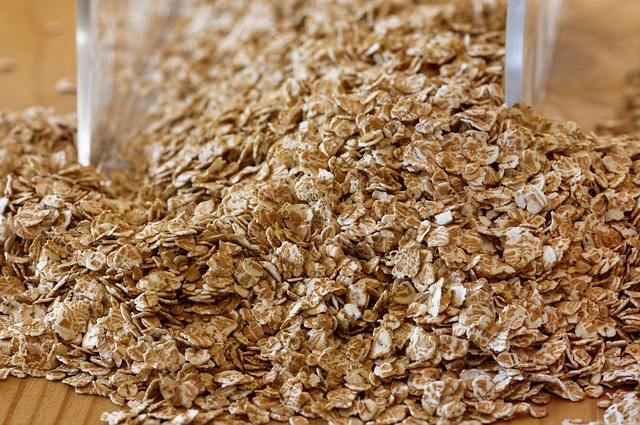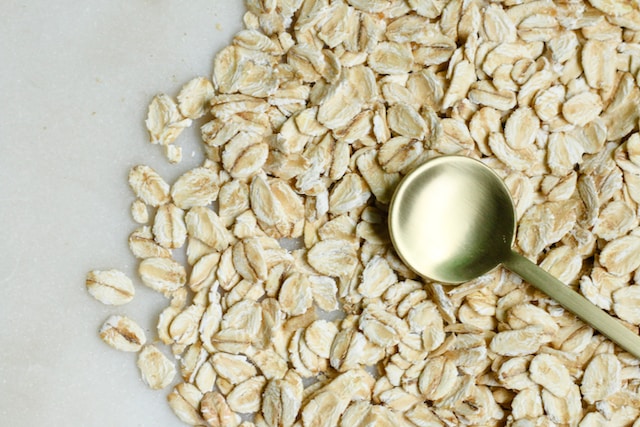Colloidal oatmeal is finely ground oatmeal, while regular oatmeal is coarser. Colloidal oatmeal is used in skincare products for its soothing properties.
TL;DR Colloidal oatmeal Vs. Regular oatmeal
Colloidal oatmeal is finely ground oats used in skincare products for its soothing, moisturizing, and anti-inflammatory properties. It helps with conditions like eczema, psoriasis, dryness, and sensitive skin, offering numerous benefits for healthier-looking skin. Regular oatmeal is the oats we eat for breakfast and is different in texture and use.
What is colloidal oatmeal?
Colloidal oatmeal refers to finely ground oats that are processed into a fine powder or suspended in liquid form. Unlike regular oatmeal you might enjoy for breakfast, colloidal oatmeal has gone through additional steps to enhance its skincare benefits.
What is regular oatmeal?

Regular oatmeal, also known as rolled oats or old-fashioned oats, is a breakfast staple that has been enjoyed for centuries. Made from whole grain oats that have been steamed and then flattened with large rollers, regular oatmeal retains its natural texture and shape.
How is colloidal oatmeal different from regular oatmeal?
Colloidal Oatmeal
- Finely ground oats processed into a powder or liquid form.
- Used in skincare products for external application.
- Contains beta-glucans that create a protective barrier on the skin.
- Provides soothing and moisturizing properties.
- Effective for conditions like eczema, psoriasis, and dry skin.
Regular Oatmeal
- Whole grain oats with larger flakes.
- Consumed as food for breakfast or cooking.
- Retains its natural texture and shape.
- Provides nutritional benefits when consumed, including fiber and vitamins.
- Not typically used for skincare applications.
How does colloidal oatmeal work?
Colloidal oatmeal works by utilizing its unique composition to benefit the skin in several ways:
- Moisturizing: When applied to the skin, colloidal oatmeal forms a protective barrier that locks in moisture, preventing dryness and promoting hydration.
- Soothing: The beta-glucans in colloidal oatmeal have anti-inflammatory properties that help reduce redness, itching, and irritation, making it effective for soothing skin conditions like eczema and psoriasis.
- Cleansing: Colloidal oatmeal possesses gentle cleansing properties, helping to remove dirt and impurities without stripping the skin of its natural oils.
- Exfoliating: It can also gently exfoliate the skin, sloughing off dead cells and unclogging pores, which can lead to a smoother and more radiant complexion.
- Anti-itch: Colloidal oatmeal inhibits certain chemical mediators responsible for triggering itching sensations, providing relief for itchy skin caused by various irritants.
Colloidal oatmeal’s bioactive substances, antioxidants, and anti-inflammatory compounds work in synergy to promote healthier and nourished skin.
What conditions are helped by colloidal oatmeal?
Eczema: Colloidal oatmeal can soothe the skin, reduce inflammation, and relieve itching associated with eczema.
Psoriasis: It can provide relief from redness, scaling, and discomfort caused by psoriasis.
Dry Skin: Colloidal oatmeal’s moisturizing properties help to hydrate and nourish dry and flaky skin.
Sensitive Skin: It is gentle on sensitive skin and can help calm and alleviate irritation.
Sunburn: Colloidal oatmeal’s anti-inflammatory properties can ease the discomfort of sunburned skin.
Insect Bites and Rashes: It can soothe itchiness and reduce inflammation caused by insect bites and rashes.
Allergic Reactions: Colloidal oatmeal can help alleviate allergic reactions on the skin.
Due to its anti-inflammatory and moisturizing effects, colloidal oatmeal is a popular natural remedy for promoting healthier-looking skin and providing relief for various dermatological concerns.
Image Credits
Featured Image By – Melissa Di Rocco on Unsplash
Image 1 By – Willfried Wende from Pixabay









